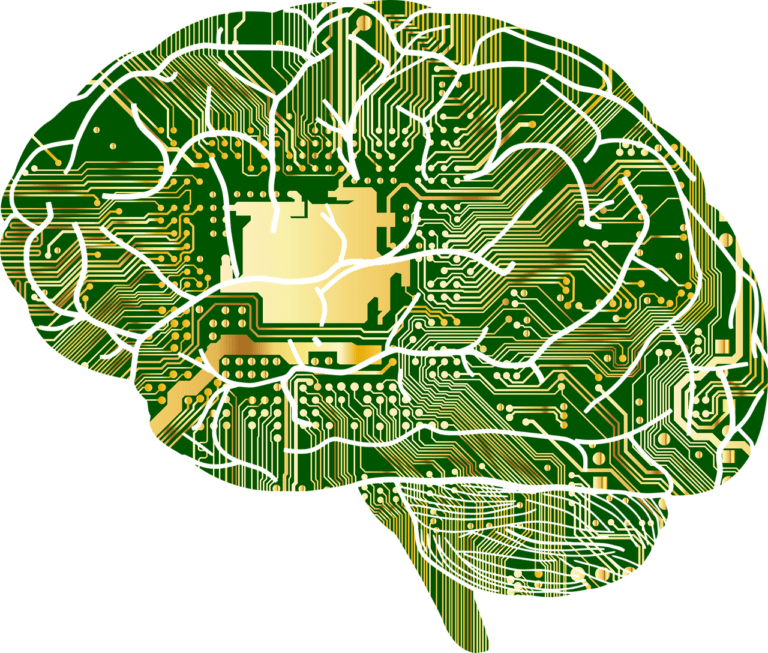Machine Learning 101: Principles and Practices
Machine learning has become an integral part of various industries, revolutionizing how businesses operate and make decisions. Understanding the foundational principles and practices of machine learning is crucial for professionals striving to harness its power effectively.
From the intricate dance between data and algorithms to the delicate balance of overfitting and underfitting, there are key concepts that can make or break a machine learning model's success.
Exploring the nuances of feature engineering and evaluation techniques uncovers the artistry behind crafting predictive models that drive innovation and efficiency in the digital age.
Key Takeaways
- Understanding machine learning principles is essential for model development.
- Data quality and algorithm selection are fundamental for predictive success.
- Supervised and unsupervised learning techniques offer different insights.
- Model evaluation and optimization techniques like hyperparameter tuning ensure model efficiency.
The Basics of Machine Learning
In the realm of artificial intelligence, understanding the fundamental principles of machine learning serves as the cornerstone for developing advanced predictive models and algorithms. Model evaluation is a critical aspect of machine learning as it determines the performance and generalization capabilities of a model. By assessing metrics such as accuracy, precision, recall, and F1 score, data scientists can gauge how well a model is performing and make necessary adjustments to improve its predictive power.
Hyperparameter tuning is another crucial step in the machine learning process. It involves fine-tuning the parameters that govern the learning process of a model to optimize its performance. Techniques like grid search, random search, and Bayesian optimization are commonly used to find the best hyperparameters for a given model. Proper hyperparameter tuning can significantly enhance a model's accuracy and efficiency, ultimately leading to better predictions and insights.
Both model evaluation and hyperparameter tuning are indispensable components in the journey of building robust machine learning models that can effectively analyze and interpret complex datasets.
Understanding Data and Algorithms
Understanding the intricacies of data collection is paramount in machine learning, as it sets the foundation for accurate analysis.
Equally critical is the judicious selection of algorithms based on specific criteria to ensure optimal model performance.
Data quality and algorithm efficacy are intertwined elements that drive the success of machine learning endeavors.
Data Collection Importance
Effective data collection is the cornerstone of successful machine learning algorithms. To ensure quality data for training models, consider the following key points:
- Data Quality: Collect relevant data that aligns with the problem statement to enhance the model's predictive power.
- Data Preprocessing: Cleanse and preprocess the data by handling missing values, outliers, and normalization to improve model performance.
- Data Bias: Be mindful of biases in the data that could lead to skewed predictions and unfair outcomes.
- Data Privacy: Safeguard sensitive information through anonymization techniques to maintain data privacy and comply with regulations.
Algorithm Selection Criteria
A thorough evaluation of algorithm selection criteria is essential for optimizing machine learning outcomes by effectively leveraging the data and algorithms available.
When selecting an algorithm, one crucial aspect to consider is the model complexity it can handle. Model complexity refers to the algorithm's ability to capture intricate patterns in the data without overfitting or underfitting.
Additionally, performance metrics play a vital role in algorithm selection. These metrics, such as accuracy, precision, recall, and F1 score, provide a quantitative measure of how well the algorithm is performing.
Supervised Learning Techniques
Supervised learning techniques are fundamental in machine learning. They involve the accurate labeling of data, training models with labeled examples, and ultimately predicting outcomes for new data points.
The process relies heavily on the availability of labeled datasets to guide the algorithm in learning patterns and making informed predictions based on the provided examples.
Labeling Data Accurately
In the realm of machine learning, accurate data labeling is a fundamental aspect that underpins the success of supervised learning techniques. When considering data labeling, several challenges may arise, including ensuring consistency, handling ambiguous cases, dealing with large datasets, and managing label noise.
To address these challenges and improve labeling accuracy, various techniques can be employed:
- Active Learning: Involves selecting the most informative data points for labeling.
- Semi-Supervised Learning: Utilizes both labeled and unlabeled data for training.
- Crowdsourcing: Involves outsourcing labeling tasks to a large group of annotators.
- Human-in-the-Loop Systems: Combines machine learning algorithms with human expertise to refine labels iteratively.
Training With Labeled Examples
Effective training with labeled examples is crucial for the success of supervised learning techniques in machine learning. Labeling accuracy plays a pivotal role in this process, as the quality of the labels directly impacts the model's ability to learn and generalize effectively.
During the training process, the algorithm learns from the labeled examples provided, adjusting its internal parameters to minimize the prediction errors. The training process involves iteratively presenting labeled examples to the model, evaluating its predictions, and updating its parameters to improve performance.
Predicting New Data
To successfully predict new data using supervised learning techniques, it is essential to leverage the trained model's learned patterns and relationships to generate accurate predictions. When working on predicting new data, consider the following:
- Feature Selection Methods: Choose relevant features that contribute most to the prediction task, improving model performance and reducing computational complexity.
- Outlier Detection: Identify and handle outliers in the dataset to prevent them from skewing the model's predictions.
- Cross Validation Techniques: Utilize methods like k-fold cross-validation to assess the model's performance on unseen data, ensuring generalizability.
- Model Evaluation: Use metrics such as accuracy, precision, recall, and F1-score to evaluate the model's performance and fine-tune it for better predictions.
Unsupervised Learning Approaches
Unsupervised learning approaches in machine learning involve training models without labeled data to uncover hidden patterns or structures within the data. Two common techniques used in unsupervised learning are clustering analysis and dimensionality reduction.
Clustering analysis aims to group similar data points together based on certain features or characteristics. This technique helps in identifying natural groupings within the data without any prior knowledge of the outcomes. By clustering data points, it becomes easier to understand the inherent structure and relationships present in the dataset.
Dimensionality reduction, on the other hand, focuses on reducing the number of random variables under consideration by obtaining a set of principal variables. This process helps in simplifying the dataset while retaining its essential information. By reducing the dimensionality of the data, it becomes more manageable, less complex, and easier to work with for further analysis or model training. These unsupervised learning approaches play a crucial role in exploratory data analysis and feature extraction in machine learning tasks.
Evaluating Model Performance
Moving from exploring unsupervised learning techniques to assessing the effectiveness of models, evaluating model performance is a critical step in determining the success and reliability of machine learning algorithms.
When it comes to evaluating model performance, there are key techniques and considerations to keep in mind:
- Cross Validation Techniques: Implementing cross-validation methods such as k-fold or leave-one-out can help in assessing how well a model generalizes to new data by splitting the dataset into multiple subsets for training and testing.
- Model Comparison: Conducting thorough comparisons between different models using metrics like accuracy, precision, recall, and F1 score can provide insights into which model performs better for a specific task.
- Hyperparameter Tuning: Optimizing hyperparameters through techniques like grid search or random search can enhance a model's performance by finding the best combination of parameters.
- Bias-Variance Tradeoff: Understanding the balance between bias and variance is crucial in evaluating model performance, as high bias can lead to underfitting while high variance can result in overfitting.
Feature Engineering Strategies
Effective feature engineering strategies play a crucial role in enhancing the performance and predictive power of machine learning models. Dimension reduction techniques such as Principal Component Analysis (PCA) or feature selection methods like Recursive Feature Elimination (RFE) help in simplifying the dataset by selecting the most relevant features, reducing noise, and improving model interpretability.
Data transformation methods like normalization and standardization are essential for scaling features to a similar range, preventing certain features from dominating the model training process due to their larger scales. Additionally, transformations like one-hot encoding are used to convert categorical variables into numerical format for model compatibility.
Feature engineering also involves creating new features through mathematical operations or domain knowledge, which can capture important patterns in the data that may enhance model performance. By carefully selecting, transforming, and creating features, machine learning models can better generalize to new data and make more accurate predictions.
Overfitting and Underfitting Concepts
In the context of machine learning models, understanding the concepts of overfitting and underfitting is crucial for achieving optimal predictive performance. These concepts are fundamental in the field of machine learning and play a vital role in determining the effectiveness of a model.
- Bias-Variance Tradeoff: Overfitting often leads to low bias and high variance, meaning the model is too complex and captures noise in the training data. Underfitting, on the other hand, results in high bias and low variance, indicating the model is too simplistic to capture the underlying patterns in the data.
- Model Complexity: Overfitting occurs when a model is excessively complex, fitting the training data too closely. In contrast, underfitting happens when the model is too simple to capture the underlying structure of the data.
- Regularization Techniques: To combat overfitting, regularization techniques like L1 and L2 regularization can be employed to penalize large coefficients and simplify the model.
- Cross-Validation: Utilizing techniques like k-fold cross-validation can help in assessing the model's performance and generalization on unseen data, assisting in identifying and mitigating overfitting or underfitting issues.
Real-World Applications and Case Studies
Utilizing machine learning in real-world applications has revolutionized industries across various sectors, showcasing its potential for enhancing efficiency and decision-making processes. Industry applications of machine learning span a wide range, from healthcare and finance to marketing and transportation. The impact analysis of implementing machine learning in these industries has been profound, leading to increased automation, predictive analytics, and personalized recommendations.
To provide a deeper understanding, let's look at a table showcasing some real-world case studies of machine learning applications:
| Industry | Application |
|---|---|
| Healthcare | Disease diagnosis |
| Finance | Fraud detection |
| Marketing | Customer segmentation |
| Transportation | Route optimization |
These examples demonstrate how machine learning algorithms are being used to analyze vast amounts of data efficiently, leading to more accurate insights and actionable outcomes in diverse industry settings. As organizations continue to leverage machine learning technologies, the potential for innovation and optimization across industries remains vast.
Conclusion
In conclusion, machine learning involves understanding data and algorithms, implementing supervised and unsupervised learning techniques, evaluating model performance, employing feature engineering strategies, and addressing overfitting and underfitting concepts.
Real-world applications and case studies showcase the practical implications of these principles and practices. Through continuous learning and application of these concepts, researchers and practitioners can harness the power of machine learning to solve complex problems and drive innovation in various industries.







